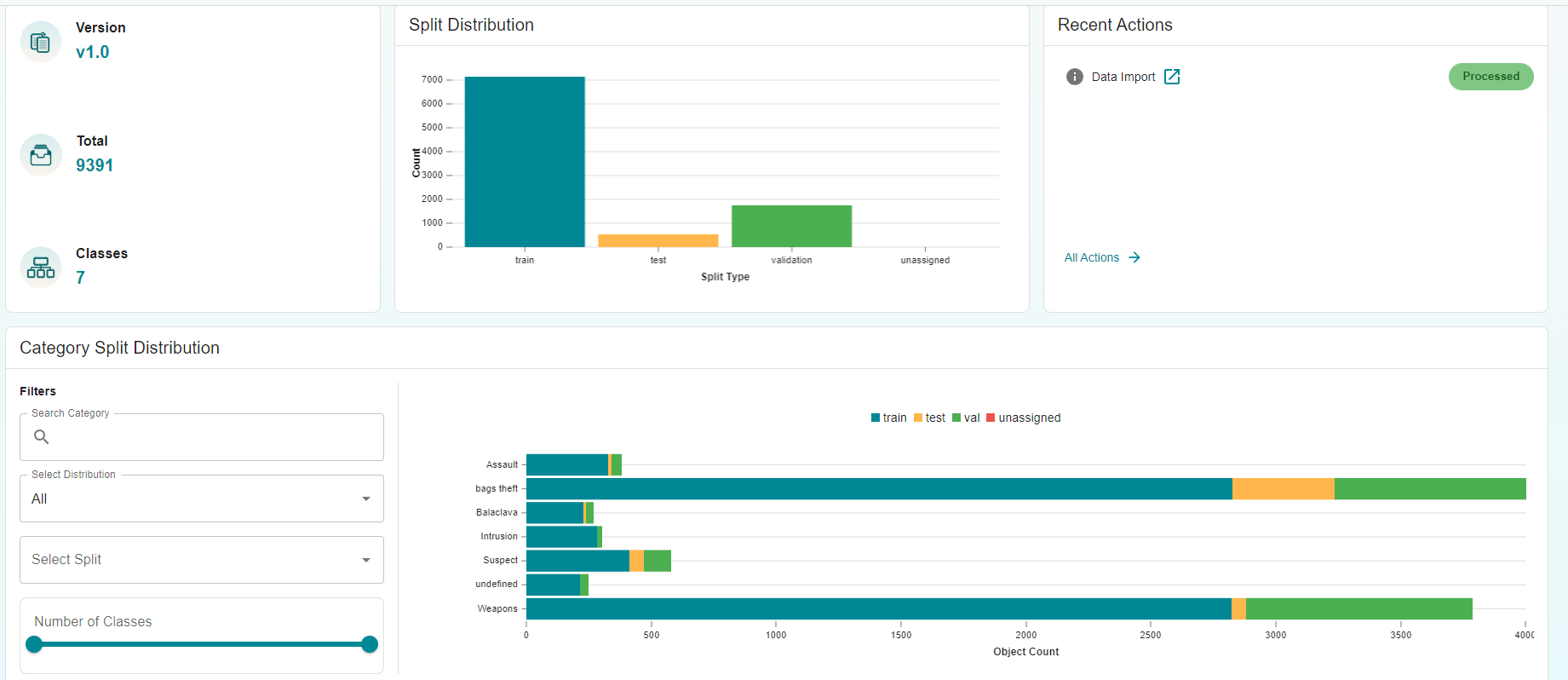Offense Detection for Security Surveillance: A Deep Dive with Matrice
In today’s world, security surveillance plays a crucial role in protecting public spaces and ensuring safety. Identifying offensive behavior and potential threats promptly is essential for effective response and deterrence. Leveraging AI-powered offense detection with Matrice allows us to recognize various threatening situations in real time, providing a proactive solution for enhancing security. This guide explores how to develop an offense detection system using Matrice, focusing on automating the identification of offensive actions and objects through cutting-edge computer vision.

Understanding Computer Vision in Security Surveillance
The Role of Computer Vision
Computer Vision (CV) enables AI systems to analyze live video feeds and detect signs of offensive behavior, such as the presence of weapons, theft, or suspicious activities, without requiring constant human monitoring. By processing video frames, CV systems can identify offensive actions and alert security personnel in real time, enabling timely intervention.
Key Capabilities of CV in Security Surveillance
Real-Time Threat Detection: CV models can identify offensive behaviors like assault, intrusion, and suspicious activities from live surveillance feeds.
Comprehensive Object Recognition: High-resolution image processing enables the detection of various threat indicators, such as weapons and theft.
Automated Alerts: By recognizing patterns associated with specific threats, CV systems can automatically trigger alerts, helping security teams respond faster.
Efficient Resource Allocation: With continuous monitoring, CV systems ensure security personnel focus on verified threats, optimizing resource use and improving overall vigilance.
Impact on Public Safety and Security
Integrating CV-based offense detection into security surveillance brings significant advantages:
Proactive Threat Response: Automated detection enables early threat recognition, helping prevent incidents before they escalate.
Enhanced Surveillance Efficiency: Automated offense detection minimizes the need for constant human oversight, allowing security teams to manage larger areas more effectively.
Reduced Operational Costs: CV-driven detection can reduce the need for extensive personnel, making large-scale surveillance more cost-effective.
Increased Public Safety: By identifying potential threats immediately, CV systems contribute to a safer environment for the public.
The Challenge: Offense Detection for Security Surveillance
Traditional Surveillance Challenges
Without automated detection, surveillance faces several challenges:
Manual Monitoring: Continuous monitoring by personnel is labor-intensive and prone to missed events due to human error.
Resource Intensive: Covering large areas with human resources alone is often costly and inefficient.
Delayed Response: Manual monitoring can lead to delayed recognition and response to potential threats, affecting safety.
Subjectivity: Human judgment can vary, leading to inconsistent threat identification and response across surveillance operators.
The Solution: Automated Offense Detection with Matrice
Matrice offers a robust solution for offense detection using AI-powered CV models. The platform provides two distinct approaches:
No-Code Interface: Ideal for users with minimal technical expertise, allowing straightforward model setup and deployment.
SDK for Customization: For advanced users, Matrice’s SDK offers flexible model configurations, enabling custom algorithms tailored to specific surveillance needs.

Implementing Offense Detection with Matrice
This guide covers the essential steps to develop a comprehensive offense detection model using Matrice:
Step 1: Dataset Preparation
A well-structured dataset is crucial to training an accurate offense detection model. Our dataset consists of diverse images covering various offensive scenarios, including weapon visibility, theft, and suspicious activities. The dataset was organized as follows:
Image Collection: A variety of images were sourced, reflecting different security scenarios, such as weapon sightings, theft instances, and other threatening actions.
Data Annotation: Each image was labeled with categories like “Weapons,” “Bags Theft,” “Assault,” and “Intrusion,” enabling the model to learn critical patterns for each offense type.
Data Splitting: The dataset was split into training (76%), validation (18%), and testing (6%) sets, ensuring balanced exposure for model training and assessment.
Category |
Count |
Train |
Val |
Test |
|---|---|---|---|---|
Weapons |
3788 |
2824 |
907 |
57 |
Bags Theft |
4001 |
2828 |
765 |
408 |
Undefined |
249 |
214 |
33 |
2 |
Assault |
382 |
329 |
40 |
13 |
Balaclava |
268 |
229 |
29 |
10 |
Intrusion |
305 |
283 |
21 |
1 |
Suspect |
578 |
414 |
107 |
57 |
Step 2: Dataset Import
Matrice simplifies dataset management, making it easy to upload, organize, and review data before training:
Upload: Images were imported directly to the Matrice platform.
Dataset Review: Matrice provides a clear overview of dataset statistics, including item count and annotations, ensuring data quality before proceeding.

Step 3: Model Configuration and Training
For offense detection, the YOLOv8s model was chosen for its speed and accuracy in real-time object detection, suitable for identifying critical threats. The key configuration details were:
Batch Size: 16
Epochs: 100
Learning Rate: 0.001
Optimizer: AdamW
CosLR: True
momentum: 0.99
Weight Decay: 0.0005
Step 4: Model Evaluation
The trained model was evaluated using critical metrics to validate its ability to detect offensive behavior effectively:
Metric |
Value (test) |
|---|---|
Precision |
0.78 |
Recall |
0.554 |
mAP50 |
0.579 |
Step 5: Model Inference
Following evaluation, the model was configured for deployment. Using Matrice, the model was exported in formats compatible with various surveillance systems:
Export Formats: ONNX and TensorRT formats were selected, suitable for deployment on edge devices.
Real-Time Detection: These formats support real-time threat recognition, enabling the model to run directly within surveillance systems for immediate alerts.
Step 6: Model Deployment
Matrice’s platform simplifies deployment, integrating the model with live surveillance setups:
API Integration: The model was deployed on Matrice’s API-enabled servers, accessible by security systems.
Automated Alerts: With real-time threat detection, the deployed model sends immediate alerts upon recognizing offensive actions, enhancing rapid response.
Data Management: Detected threat data is synchronized with control centers, ensuring comprehensive record-keeping for incident analysis.
Conclusion
Utilizing Matrice for offense detection in security surveillance enhances threat identification and response, transforming traditional monitoring methods. By automatically recognizing offensive behavior, this AI-powered system allows security teams to address potential threats proactively, providing a safer environment for public spaces.
With Matrice’s accessible tools and robust platform, security teams can streamline workflows, ensuring accurate and efficient offense detection, ultimately contributing to improved safety and operational effectiveness across various surveillance scenarios.
Think CV, Think Matrice
Experience 40% faster deployment and slash development costs by 80%